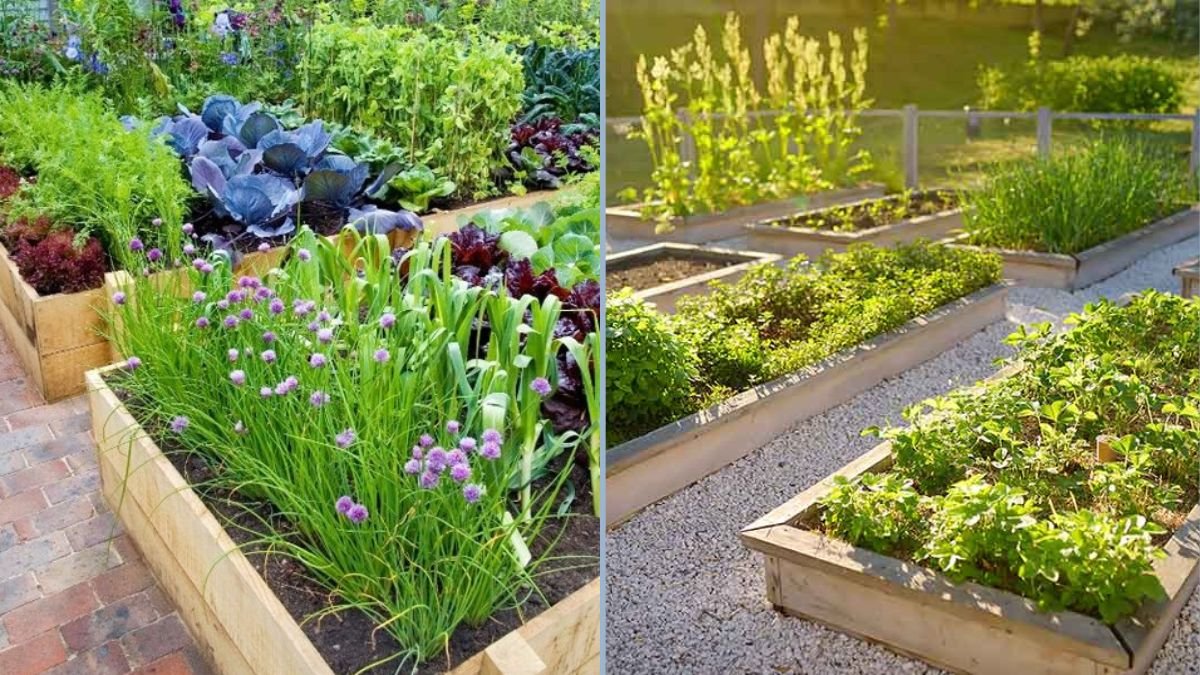In an era when healthy eating, sustainability, and self-sufficiency are gaining renewed importance, the idea of cultivating a kitchen garden has become more appealing than ever. A kitchen garden — a small, home-based garden designed to grow fresh vegetables, herbs, and fruits — allows individuals to enjoy organic produce straight from their own backyard, balcony, or even windowsill.
Starting a kitchen garden from scratch may seem intimidating to beginners, but with proper planning, patience, and practical knowledge, anyone can transform a small space into a thriving source of fresh, chemical-free food. This article explores the essential steps, techniques, and benefits of starting a kitchen garden, offering a comprehensive guide for creating a sustainable, vegetarian-friendly, and rewarding home garden.
Understanding the Concept of a Kitchen Garden
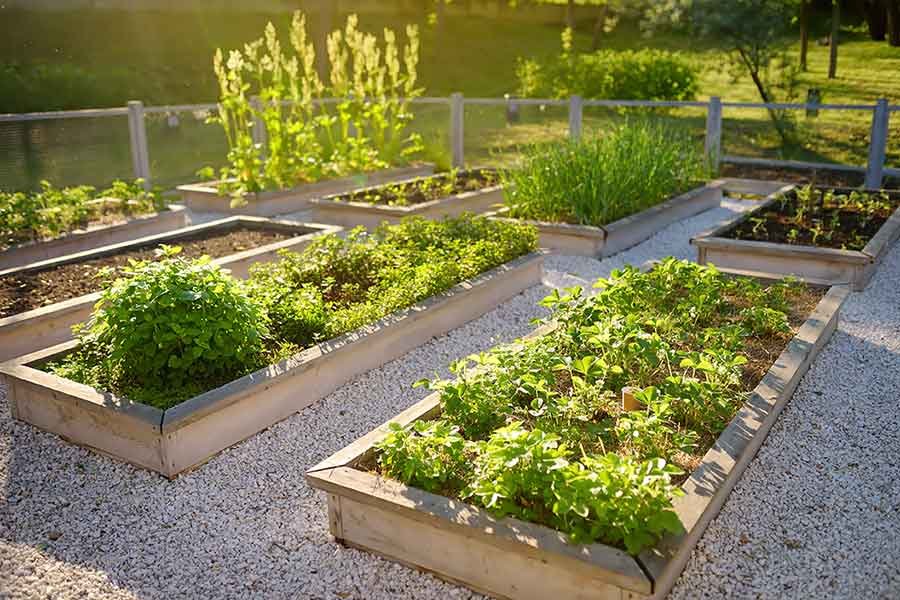
A kitchen garden (also known as a home garden or vegetable patch) refers to a small-scale cultivation area dedicated to growing edible plants for daily household use. Unlike large farms, kitchen gardens focus on variety and convenience rather than volume. They are designed to provide easy access to fresh produce right when needed for cooking.
Kitchen gardens can be established in various spaces — from backyard plots and terraces to balconies and window boxes — depending on available area and sunlight. They promote self-sufficiency, encourage organic growing methods, and reconnect people with nature.
Benefits of Having a Kitchen Garden
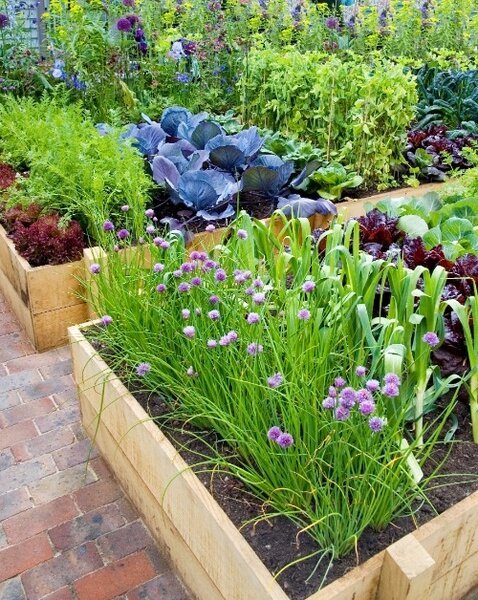
- Access to Fresh and Organic Produce: Home-grown vegetables and herbs are free from harmful chemicals, pesticides, and preservatives. You control what goes into your soil and onto your plants.
- Nutritional Value: Freshly harvested produce retains more vitamins, minerals, and flavor compared to store-bought alternatives.
- Cost-Effective: Once established, kitchen gardens reduce grocery expenses and provide continuous harvests with minimal investment.
- Environmental Sustainability: Growing your own food reduces packaging waste, food miles, and carbon footprint.
- Stress Relief and Mental Wellness: Gardening offers therapeutic benefits, reduces stress, and promotes mindfulness.
- Educational Value: It teaches patience, responsibility, and awareness about the natural life cycle of plants.
A kitchen garden is not merely about growing plants — it’s about cultivating a healthier lifestyle and sustainable living.
Step 1: Planning Your Kitchen Garden
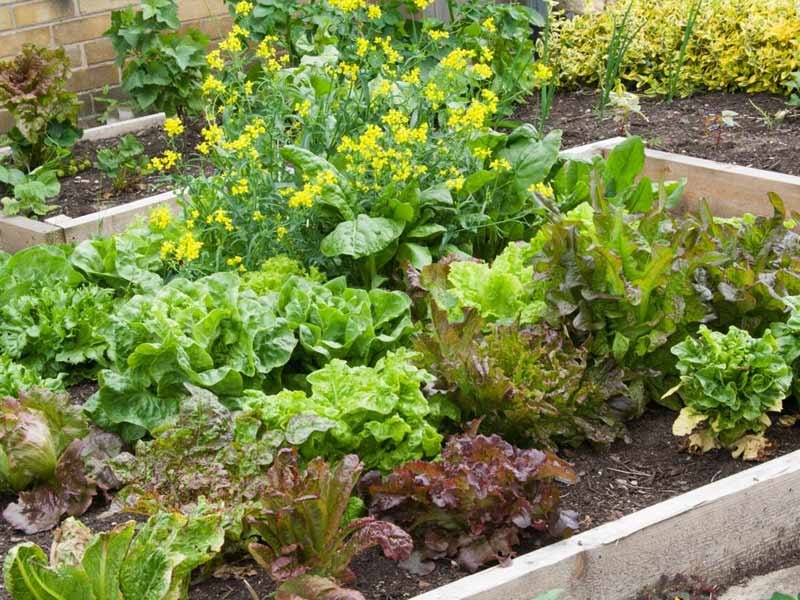
Proper planning is crucial for success, especially when starting from scratch.
A. Assess Your Space
Evaluate how much space you have and how much sunlight it receives. Most vegetables require at least 4–6 hours of direct sunlight per day.
- Balcony gardens: Use vertical planters or hanging pots.
- Terrace gardens: Opt for raised beds or containers.
- Backyard plots: Divide into small beds for easy management.
Even a small windowsill can host herbs like basil, mint, or coriander.
B. Decide What to Grow
Choose plants based on your family’s preferences, local climate, and growing season. Begin with easy-to-grow vegetables and herbs such as:
- Leafy greens: Spinach, lettuce, fenugreek (methi), amaranth
- Herbs: Mint, coriander, basil, parsley, lemongrass
- Vegetables: Tomatoes, chillies, okra, beans, radishes
- Root crops: Carrots, beetroot, garlic, onions
C. Plan Garden Layout
Group plants based on their sunlight, water, and soil needs. For example:
- Place sun-loving plants like tomatoes and peppers in bright areas.
- Grow leafy greens and herbs in partial shade.
Use containers, vertical trellises, or garden beds to optimize available space.
Step 2: Preparing the Soil
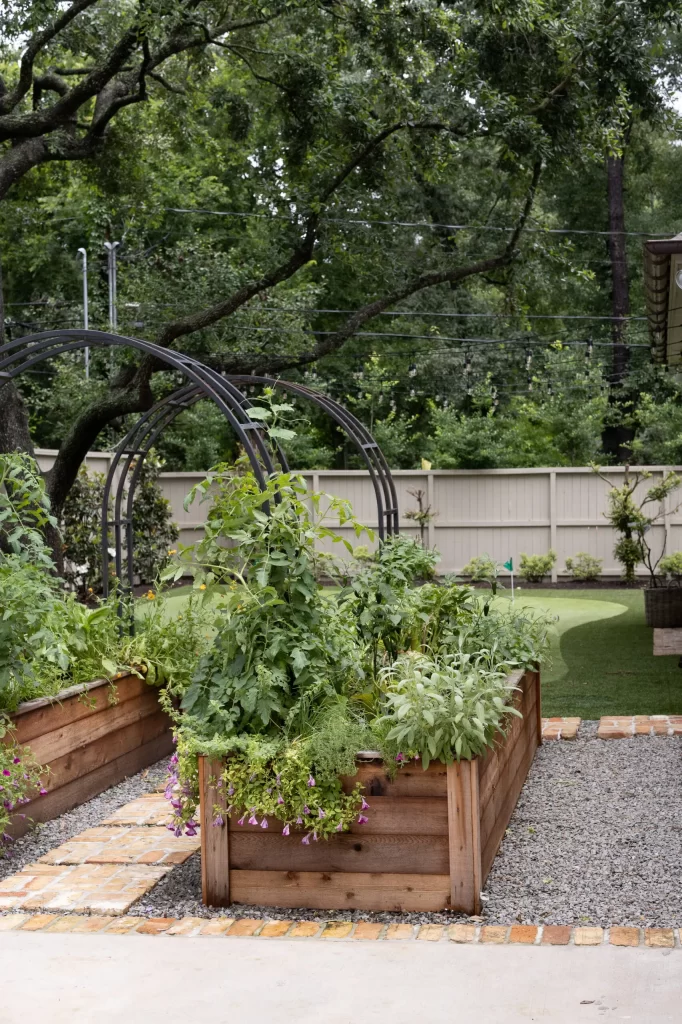
Healthy soil is the foundation of a thriving kitchen garden. Good soil should be well-draining, nutrient-rich, and slightly moist.
A. Soil Composition
Ideal garden soil combines:
- Garden soil (40%) – Base for structure and minerals
- Compost or organic manure (40%) – Provides nutrients
- Cocopeat or sand (20%) – Improves aeration and drainage
B. Adding Organic Matter
Use compost made from kitchen scraps such as vegetable peels, fruit waste, and dried leaves. Organic matter improves soil fertility and encourages beneficial microorganisms.
C. pH Level and Aeration
Most vegetables prefer neutral to slightly acidic soil (pH 6–7). Loosen soil regularly to allow roots to breathe and water to penetrate effectively.
Step 3: Choosing the Right Containers or Beds
If you lack ground space, containers and grow bags are ideal alternatives.
Container Gardening Tips:
- Use pots made of clay, terracotta, or recycled plastic.
- Ensure proper drainage holes to prevent waterlogging.
- Choose sizes suitable for plant roots:
- Small pots (6–8 inches): herbs and leafy greens.
- Medium pots (10–12 inches): tomatoes, peppers.
- Large pots or grow bags: root vegetables or creepers.
For backyard gardens, raised beds made from wood, bricks, or recycled materials provide better control over soil quality and weeds.
Step 4: Sowing and Planting
A. Seed Selection
Choose good-quality, organic, and non-GMO seeds from trusted sources. You can also collect seeds from existing produce like tomatoes, coriander, or chillies.
B. Sowing Techniques
- Direct Sowing: For crops like spinach, beans, or carrots, plant seeds directly into the soil.
- Transplanting: For plants like tomatoes or peppers, start seeds in small trays and transplant seedlings after they grow 3–4 inches tall.
C. Spacing and Depth
Maintain proper spacing to prevent overcrowding. Refer to seed packets or guidelines — overcrowded plants compete for light, nutrients, and water, reducing yields.
Step 5: Watering and Maintenance
Proper watering is vital for healthy plant growth.
Watering Tips:
- Water early in the morning or late in the evening to reduce evaporation.
- Avoid overwatering — soggy soil leads to root rot.
- Use a watering can or drip irrigation system for gentle, uniform watering.
Mulching
Add a layer of dry leaves, straw, or cocopeat around plants to retain moisture and suppress weeds.
Pruning and Weeding
Remove dead leaves and weeds regularly to promote air circulation and prevent pests. Trim herbs like mint or basil often to encourage new growth.
Step 6: Natural Pest and Disease Management
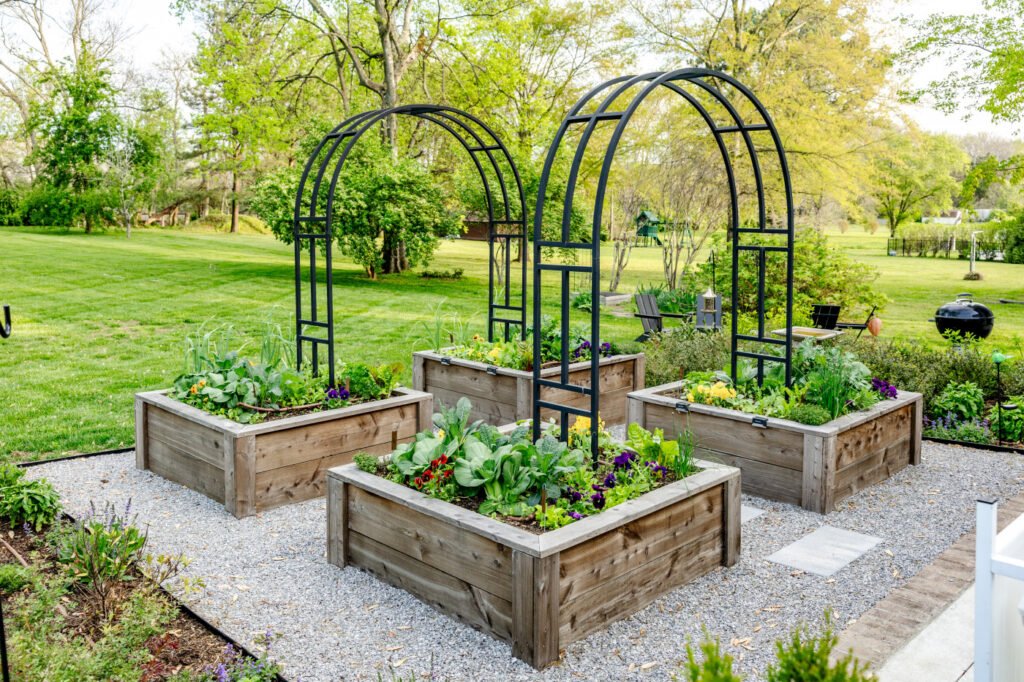
Instead of using chemical pesticides, adopt eco-friendly solutions that keep your kitchen garden safe and organic.
Natural Remedies:
- Neem oil spray: Controls aphids, mites, and whiteflies.
- Garlic-chili spray: Acts as a natural repellent for many pests.
- Soap water: Helps eliminate mealybugs and scales.
Companion Planting:
Grow certain plants together to deter pests naturally:
- Basil with tomatoes (repels insects).
- Marigold with vegetables (discourages nematodes).
- Mint near cabbage (repels aphids).
These natural methods protect your garden while maintaining ecological balance.
Step 7: Harvesting and Replanting
Harvest vegetables when they reach full maturity for the best flavor and nutrition. Use clean scissors or pruning shears to avoid damaging plants.
- Leafy greens: Pick outer leaves regularly to allow continuous growth.
- Fruiting plants: Harvest tomatoes, chillies, or beans once ripe and firm.
- Root crops: Gently pull carrots, beets, or radishes when soil loosens easily.
After harvesting, replant the same containers with fast-growing crops or herbs to ensure continuous productivity. Rotate crops to prevent soil depletion.
Step 8: Composting Kitchen Waste
A sustainable kitchen garden thrives on recycling. Composting converts organic waste into nutrient-rich soil.
Composting Steps:
- Collect fruit and vegetable peels, eggshells, and dry leaves.
- Layer them alternately with soil or compost accelerator.
- Keep moist and turn weekly for aeration.
- In 45–60 days, you’ll have dark, earthy compost ready to enrich your garden.
This circular process ensures minimal waste and continuous fertility in your kitchen garden.
Step 9: Year-Round Gardening
To enjoy fresh produce throughout the year, plan according to seasonal changes:
- Summer: Grow tomatoes, chillies, okra, cucumbers, and herbs.
- Monsoon: Plant spinach, coriander, and leafy vegetables.
- Winter: Ideal for carrots, beetroot, lettuce, peas, and radishes.
Rotate crops seasonally to maintain soil balance and reduce pest risks.
Step 10: Sustainable Practices and Aesthetic Touches
Incorporating sustainability enhances the garden’s beauty and function.
- Use Recycled Materials: Repurpose bottles, buckets, or tires as planters.
- Collect Rainwater: Install a small rain barrel for eco-friendly watering.
- Add Decorative Plants: Combine edible and ornamental plants for visual appeal.
- Label Plants: Mark each plant with its name and date of sowing for organization.
A well-maintained kitchen garden can become both a food source and a peaceful retreat.
Common Mistakes to Avoid
- Overwatering or underwatering plants.
- Planting incompatible crops too close.
- Ignoring pest prevention until damage occurs.
- Using poor-quality soil or skipping compost.
- Not rotating crops, leading to nutrient depletion.
Learning from these mistakes ensures a thriving and productive garden.
Conclusion
Starting a kitchen garden from scratch is a journey of growth — not just for plants, but for the gardener as well. With thoughtful planning, proper soil preparation, organic care, and consistent maintenance, anyone can transform even a small space into a productive green haven.
Beyond providing fresh and nutritious food, a kitchen garden fosters sustainability, self-reliance, and mindfulness. It reconnects people to nature, encourages environmental responsibility, and cultivates a sense of accomplishment that store-bought produce can never match.
Whether you have a large backyard or just a sunny windowsill, the first seed you plant marks the beginning of a rewarding, lifelong habit — one that nourishes your body, mind, and the planet.
